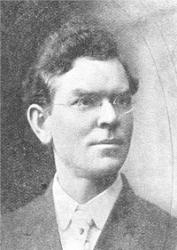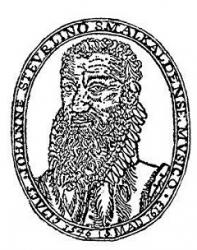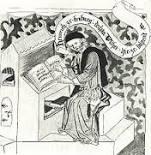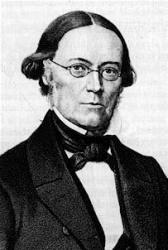Planning worship?
Check out our sister site, ZeteoSearch.org,
for 20+ additional resources related to your search.
- |
User Links
Person Results
Ernst W. Olson

1870 - 1958 Translator of "Jerusalem, lift up thy voice!" in The Hymnal of the Evangelical Mission Covenant Church of America Ernst W. Olson (b. Skane, Sweden, 1870; d. Chicago, IL, 1958) prepared the English translation for the 1925 Hymnal of the Lutheran Augustana Synod. As editor, writer, poet, and translator, Olson made a valuable contribution to Swedish-American culture and to church music. His family immigrated to Nebraska when he was five years old, but he spent much of his life in the Chicago area. Educated at Augustana College, Rock Island, Illinois, he was editor of several Swedish-American newspapers and spent most of his professional career as an editor for the Augustana Book Concern (1911-1949). Olson wrote History of the Swedes in Illinois (1908). He also contributed four original hymns and twenty-eight translations to The Hymnal (1925) of the Evangelical Lutheran Augustana Synod and served on the committee that produced the Lutheran Service Book and Hymnal (1958).
Bert Polman
Ernst W. Olson
Georg Weissel
1590 - 1635 Person Name: Georg Weissel, 1590-1635 Author of "Make Wide the Door, Unbar the Gate" in Ambassador Hymnal Weissel, Georg, son of Johann Weissel, judge and afterwards burgomaster at Doranau, near Königsberg, was born at Domnau in 1590. He studied at the University of Königsberg, from 1608 to 1611, and thereafter, for short periods, at Wittenberg, Leipzig, Jena, Strassburg, Basel and Marburg In 1614 he was appointed rector of the school at Friedland near Domnau, but resigned this post after three years, and returned to Königsberg to resume his studies in theology. Finally, in 1623, he became pastor of the newly erected Altrossgart church at Königsberg, where he remained till his death, on August 1, 1635.
Weissel was one of the most important of the earlier hymn-writers of Prussia. His hymns, about 20 in all, are good in style, moderate in length, and varied in metre. The earliest seem to have been written for use at the consecration of the Altrossgart church on the 2nd Sunday in Advent, 1623. The majority are for the greater festivals of the Christian year. The best are No. ii. below, and those for the dying. They appeared mostly in the Königsberg hymn-books, 1639-1650, and in the Preussische Fest-Lieder, pt. i., Elbing, 1642; pt. ii., Königsberg, 1644 [Berlin Library].
Those of Weissel's hymns which have passed into English are:—
i. Im finstern Stall, o W under gross. Christmas. First published in B. Derschau's Ausserlesene geistliche Lieder, Königsberg, 1639, p. 7, in 5 stanzas of 5 lines In the Preussische Fest-Lieder, pt. i., 1642, No. 14, it is entitled "On the Birth of Christ, Lux in tenebris lucet.” The translation in common use is:—
0 miracle of love and might This is a somewhat free translation, omitting stanza v., by Dr. Kennedy, as No. 104 in his Hymnologia Christiana, 1863.
ii. Macht hoch die Thür, das Thor macht weit. Advent. This is a Hymn of Triumph for the Entry of the King of Glory, founded on Ps. xxiv.; and is one of the finest German Advent hymns. First published in the Preussische Fest-Lieder, pt. i., 1642, No. 2, in 5 stanzas of 8 lines, marked as "On the 1st Sunday of Advent."
The translations in common use are:—
1. Lift up your heads, ye mighty gates. This is a good and full translation by Miss Winkworth, in herLyra Germanica, 1st Ser., 1855, p. 10, and her Chorale Book for England, 1863, No. 25. In the Congregational Church Hymnal, 1887, the Evangelical Hymnal, N. Y., 1880, and others, the original form is followed. Other forms are:—
(1) Behold One cometh from afar (i. alt.). This (partly from Mercer) is in the Supplement to the New Congregational Hymn Book, and the 1874 Appendix. to the Leeds Hymn Book.
(2) Behold He cometh from afar. In J. L. Porter's Collection, 1876, altered from No. l.
(3) Oh! hallowed is the land and blest (iii. lines 1, alt.). In the American Sabbath Hymn Book, 1858, &c.
(4) 0 blest the souls, for ever blest (iii. lines1, alt.). In Hymns of the Spirit, Boston, U.S., 1864.
(5) Fling wide the portals of your heart (iv.). In the American Unitarian Hymn Book, 1868.
2. The mighty gates of earth unbar. This is by W. Mercer, based on Miss Winkworth's translation, in his Church Psalm & Hymn Book, 1857, No. 14 (Ox. ed., 1864, No. 71), repeated in Kennedy, 1863. Another translation is: "Lift up, lift up your heads, ye gates," by G. Moultrie, in his Espousals of St. Dorothea, 1870.
iii. Wo ist dein Stachel nun, o Tod? Easter. Founded on 1 Cor. xv., 55-58. First published as No. 3 in pt. ii., 1644, of the Preussische Fest-Lieder, in 5 stanzas of 8 lines, entitled "For the Easter festival." Thence in the Königsberg Gesang-Buch, 1650, p. 193, and others. The form which has passed into English is that in the Hannover Gesang-Buch, 1657, No. 74, in 10 stanzas. This, beginning "O Tod, wo ist dein Stachel nun," is entirely rewritten, probably by Justus Gesenius. Translated as:—
O Death! where is thy cruel sting? This is a full and good version of the 1657 text, as No. 80 in the Ohio Lutheran Hymnal, 1880, marked as a compilation. [Rev. James Mearns, M.A.]
-- Excerpts from John Julian, Dictionary of Hymnology (1907)
Georg Weissel
Johann Steuerlein

1546 - 1613 Person Name: I. Steuerlein Author of "The old year now hath passed away" in Lutheran Hymnal for the Sunday School Johann Steuerlein (b. Schmalkalden, Thuringia, Germany, 1546; d. Meiningen, Germany, 1613) studied law at the University of Wittenberg. From 1569 to 1589 he lived in Wasungen near Meiningen, where he served as town clerk as well as cantor and organist in the Lutheran church. From 1589 until his death he lived in Meiningen, where at various times he served as notary public, mayor, and secretary to the Elector of Saxony. A gifted poet and musician, Steurlein rhymed both the Old and New Testaments in German. A number of his hymn tunes and harmonizations were published in Geistliche Lieder (1575) and Sieben und Zwantzig Neue Geistliche Gesenge (1588).
Bert Polman
Johann Steuerlein
Mrs. Vokes
Author (attributed to) of "Soon may the last glad song arise" in The Hymnal Pseudonym. See also
Mrs. Vokes
Richard Massie
1800 - 1887 Translator of "To Shepherds, as they watched by night" in Evangelical Lutheran hymnal Massie, Richard, eldest son of the Rev. R. Massie, of Goddington, Cheshire, and Rector of Eccleston, was born at Chester, June 18, 1800, and resides at Pulford Hall, Coddington. Mr. Massie published a translation of Martin Luther’s Spiritual Songs, London, 1854. His Lyra Domestica, 1st series, London, 1860, contains translations of the 1st Series of Spitta's Psalter und Harfe. In 1864 he published vol. ii., containing translations of Spitta's 2nd Series, together with an Appendix of translations of German hymns by various authors. He also contributed many translations of German hymns to Mercer's Church Psalter & Hymn Book; to Reid's British Herald; to the Day of Rest, &c. He died Mar. 11,1887.
-- John Julian, Dictionary of Hymnology (1907)
Richard Massie
Valentin Schumann
? - 1542 Person Name: Valentin Schumann, fl. 1st half of 16th century Composer of "VOM HIMMEL HOCH (ERFURT)" in CPWI Hymnal
Valentin Schumann
Johan Olof Wallin

1779 - 1839 Person Name: Johan Olof Wallin, 1779-1839 Author of "Behold the Joyful Day is Nigh" in Hymnal and Order of Service Johan Olaf Wallin was born at Stora Tuna, in 1779, and early displayed his poetical powers. In 1805, and again in 1809, he gained the chief prize for poetry at Upsala. In the latter year he became pastor at Solna; here his ability as a preacher was so striking that he was transferred to Stockholm, in 1815, as "pastor primarius," a title for which we have no exact equivalent. In 1818 he was made Dean of Westeras, and set about the task of editing a revised hymn-book for the whole of Sweden. This task he completed in 1819, and published it as, Den Swenska Psalmboken, af Konungen gillad och stadfästad (The Swedish hymn-book, approved and confirmed by the King). To it he contributed some 150 hymns of his own, besides translations and recastings; and the book remains now in the form in which he brought it out. It is highly prized by the Swedes, and is in use everywhere.
--John Julian, Dictionary of Hymnology, p. 1000 (1907)
Johan Olof Wallin
Heinrich von Laufenberg

1390 - 1460 Author of "Lord Jesus Christ, Our Lord Most Dear" in The Presbyterian Hymnal Heinrich of Laufenburg was a native of Laufenburg, Aargau, Switzerland, The earliest notice of him is that in 1434 he was decan of the Collegiate Church of St. Maurice at Zofingen in Aargau. He afterwards held a similar post at Freiburg, in Baden; but in 1445 became a monk in the monastery of the Knights of St. John at Strassburg ("Zum grunen Werde"). He was living there in 1458, but probably died in that year or soon after (Koch, i. 213-214; Allgemine Deutsche Biographie, xix. 810-813, &c).
He was the most important and most prolific hymn-writer of the 15th century, and a number of his productions are of sweetness and abiding worth. Most of them are in honour of the Blessed Virgin Mary. Many are in intricate metres, while others are written to song tunes, or are recasts of songs, or translations from the Latin. A large number are included by Wackernagel in his second volume, principally taken from a paper manuscript of the 15th century, which he found in the town library at Strassburg.
Two of the best of his original hymns are:—
i. Ach lieber Herre Jesu Christ. Cradle Hymn. This beautiful prayer of a mother for her infant child is given by Wackernagel, ii. p. 534, in 5 stanza of 6 lines, from the Strassburg MS., where it is entitled "Benedictio puerily." In his Kleines Gesang-Buch, 1860, Wackernagel gives it as No. 114 (omitting stanza ii.) with the original melody, dating both 1429. The text is also in Hoffmann von Fallersleben, edition 1861, No. 125. Translated as:—
Ah ! Jesu Christ, my Lord most dear. A full and very good translation by Miss Winkworth in her ChristianSingers, &c, 1869, p. 93. The address to the B. V. M. in stanza ii.,
"Maria, müter Jesu Christ,
Sit du dins Kints gewaltig bist,"
is translated as:—
“Since in Thy heavenly kingdom, Lord,
All things obey Thy lightest word."
Her translation was adopted with alterations by the Rev. H. White in the Savoy Hymnary (Chapel Royal, Savoy), 1870, No. 35, beginning, "Lord Jesu Christ, our Lord most dear." Instead of taking the very good original melody, Mr. White altered the hymn to 6-8 metre, and omitted stanzas iv., v. This form has been repeated in the S. P. C. K. Church Hymns, 1871; Mrs. Brock's Children's Hymn Book, 1881, and others.
ii. Ich wollt dass ich daheime war. Eternal Life. A beautiful hymn of spiritual Home¬sickness. Wackernagel, ii. p. 540, includes a version in 13 stanzas of 2 lines from the Strassburg MS.; and another in 9 stanzas of 2 lines from a 15th century MS. at Berlin. Hoffmann von Fallersleben, 1861, gives the Strassburg text as No. 54; and a form in 9 stanzas from a MS. at Inzkofen, near Sigmaringen, dating 1470-1480, as No. 55. In his Kleines Gesang-Buch,1860, Wackernagel gives as No. 74 a slightly altered form of the Strassburg text, along with the original melody. Translated as "I would I were at last at home," by Miss Winkworth, 1869, p. 92. [Rev. James Mearns, M.A.]
-- John Julian, Dictionary of Hymnology
Heinrich von Laufenberg
A. J. Mason

1851 - 1928 Person Name: A. J. Mason, 1851-1928 Translator of "O Jesus, Blessed Lord, to Thee" in Ambassador Hymnal Mason, Arthur James, M.A., was educated at Trinity College, Cambridge; B.A., in honours, 1872. He became a Fellow of his college in 1873, and Assistant Tutor in 1874. Ordained in 1874, he has since held some important appointments, and is now (1891), Hon. Canon and Canon Missioner of Truro, and Vicar of All Hallows, Barking, City of London, 1884, &c. To the 1889 Supplemental Hymns to Hymns Ancient & Modern, he contributed a translation of the Danish hymn: "0 Jesu! søde Jesu, dig" ("0 Jesu, Blessed Lord, to Thee"), Holy Communion, and the following original hymns:—
1. Church of the living God. The Holy Catholic Church.
2. Hail, Body true, of Mary born, and in the manger laid. Holy Communion.
3. Look down upon us, God of grace . Holy Communion.
4. 0 God, to know that Thou art just. Home Missions.
--John Julian, Dictionary of Hymnology, Appendix, Part II (1907)
===================
Mason, A. J., p. 1579, i., son of G. W. Mason, was b. May 4, 1851. Dr. Mason has had a most distinguished career, and has held important appointments in addition to those named on p. 1579, i., including that of Select Preacher at Oxford. In 1895 he became Lady Margaret Professor at Cambridge, and Canon of Canterbury; and in 1903 Master of Pembroke Coll., Cambridge. In addition to other works he published in 1875 The Persecution of Diocletian, and in 1902 Ministry of Conversion. His hymns, noted on p. 1579, i., were retained in the revised edition of Hymns Ancient & Modern, 1904 (Nos. 1, 2, 3, were written about 1886, and 4 in 1874). His hymn on the Seventh Word on the Cross, "The life-long task was done," written in 1902, was also included therein. His translations of the "Salve, festa dies" hymns for Easter, &c, are annotated under their Latin first lines.
--John Julian, Dictionary of Hymnology, New Supplement (1907)
A. J. Mason
M. B. Landstad

1802 - 1880 Person Name: Landstad Translator of "Fra Himlen høit jeg kommer her" in M. B. Landstads Kirkesalmebog og "Nokre Salmar" ved Professor Dr. E. Blix, samt følgende tillæg Magnus Brostrup Landstad (born 7 October 1802 in Måsøy, Norway and died 8 October 1880 in Kristiania) was a Norwegian minister, psalmist and poet who published the first collection of authentic Norwegian traditional ballads in 1853. This work was criticized for unscientific methods, but today it is commonly accepted that he contributed significantly to the preservation of the traditional ballads.
Landstad lived with his father Hans Landstad (1771–1838) who was also a minister, first in 1806 to Øksnes, to Vinje in 1811 and to Seljord in 1819. He took a theological degree (cand. theol) in 1827, and worked after that as the resident chaplain in Gausdal for six years. After that he worked in different parishes in Telemark, Østfold before he became minister of Sandar in Vestfold in 1859. He married Wilhelmine Margrete Marie Lassen, in 1828. He is well known for introducing popular, contemporary Norwegian language into the hymns he wrote, contributing significantly to the spirit of Norwegian romantic nationalism which grew in Norway in this period.
His greatest single achievement was the Landstad Hymnbook (Kirkepsalmebog), which with later revisions was used in Norwegian (bokmål) parishes from 1869 until 1985. The current official church hymnbook contains a lot of his hymns and his translations of foreign hymns.
He was the cousin of Hans Peter Schnitler Krag.
The Landstad-institute, which lies in Seljord, is named after him.
He was a great grandfather of Magny Landstad, also a famous writer.
Publications--
1852: Norske Folkeviser. 3 vols. Christiania: C. Tönsberg, [1852-]1853.
1869: Kirkesalmebok: efter offentlig Foranstaltning. Kristiania: J. W. Cappelens Forlag, 1871
--http://en.wikipedia.org/wiki/
See also in:
Wikipedia
M. B. Landstad


 My Starred Hymns
My Starred Hymns


